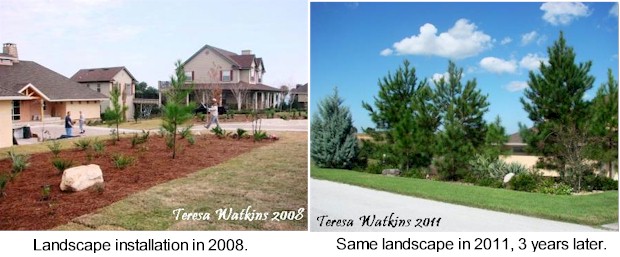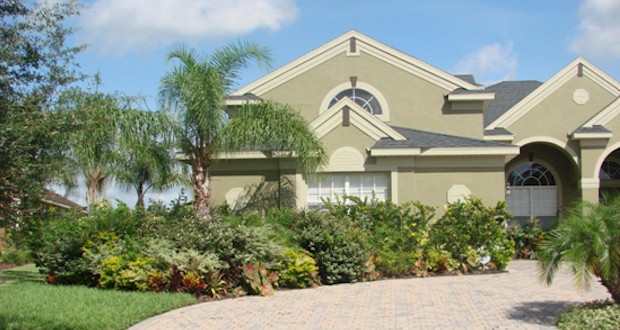
19th century home of George W. Cable, The Amateur Garden
During the late 19th century, suburban builders planted landscape plants around homes to highlight the grandeur of the property. Frederick Law Olmstead, founder of American landscapes, advised to ‘take care of the corners, and the centers will take care of themselves.’ Installing opulent shrubs and trees around foundations not only accented homes but created the framework to showcase the architecture of a new century.

After World War II, houses became less expensive and landscape packages adjusted to budgets of veteran first-time home buyers. The next generation — baby-boomers— jumped into the middle class. The housing boom continued with smaller yards, less money for landscape budgets becoming the norm. Today with savvy builders and 21st century science of water and energy conservation leads the way in offering ‘green’ landscapes with their showcase homes. But for others, the Victorian trend of installing foundation plants continues with the 20th century artificial reality of zero-lot lines and instant landscapes. You can easily tell the age of an instant landscaped community by the large trees, scantily grassed front yards from the lack of sunlight, and overgrown shrubs blocking the view of the doors and windows. Its five to ten years old.

Instant landscapes have a formula: Pack as many colorful plants around the house as possible to give that WOW factor so you can sell the house quickly. The buyers move in, loving the landscape, not realizing the costs and work ahead with high maintenance of pruning, pest control, and replacing stressed plants within a few years.

The first six months is the honeymoon, landscapes look good. But Olmstead’s advice that the centers will take care of themselves is a lie. Over the next two – three years though, the established landscapes mature and grow into their full size, requiring continual pruning to get to the door, or see out windows, or keep the trees from hitting the roof. Mold and mildew become issues with the moisture of irrigation hitting the home and lack of air circulation from the shrubs. With bi-weekly or monthly pruning necessary to prevent shrubs and trees from taking over the home, the shrubs succumb to die-back or ‘bare-bottom syndrome’*, leaving the shrub looking forlorn and sickly.
* My label for shrubs that have no foliage at their base due to being pruned incorrectly.
Photos © Teresa Watkins
